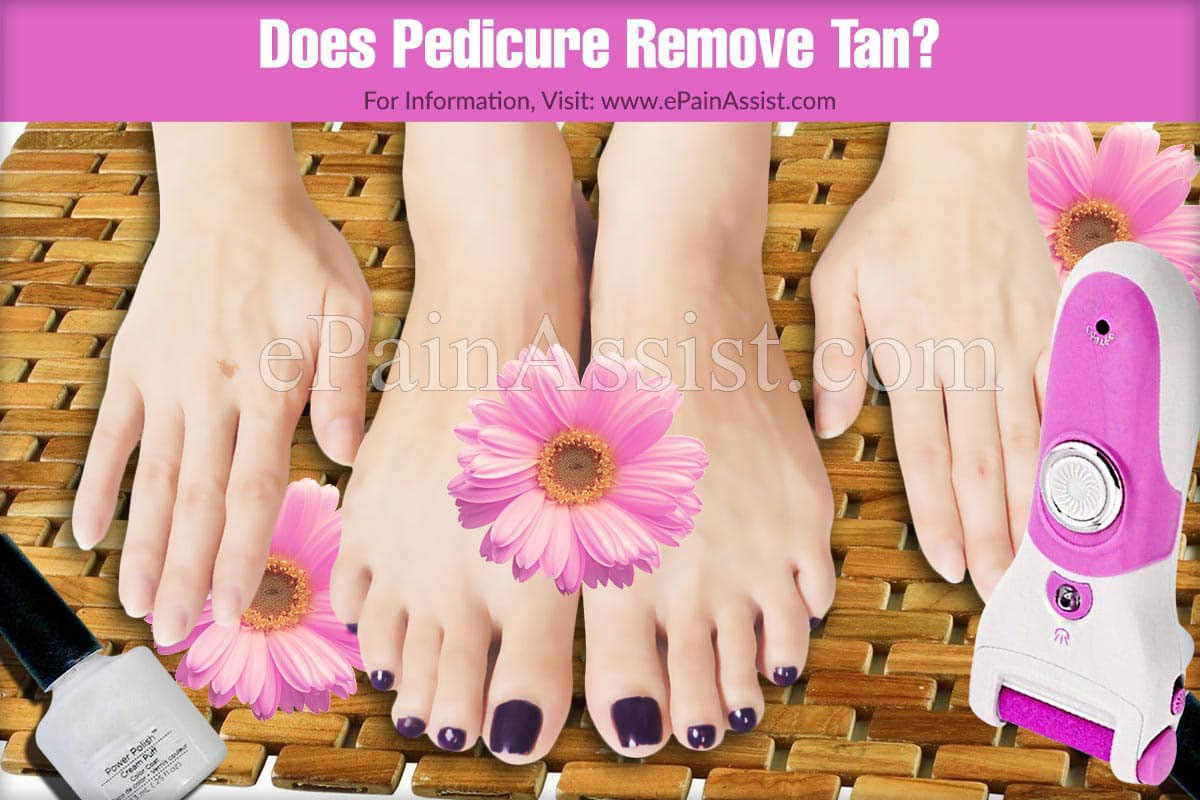Tanning is the protective response of skin to harmful solar radiations. Skin increases the synthesis of melanin that absorbs the UVA radiations. Pedicure may help remove tan.
Does Pedicure Remove Tan?
Pedicure is the method for improving the look of feet and toenails and is also used for treatment purposes. It helps to remove the dead cells from the feet and helps in the generation of new cells. It results in healthy feet. Frequent pedicure not only takes care of the feet but also provides various benefits. Pedicure improves blood circulation, improves nail health and de-stress the person as it also includes massage3.

Pedicure helps in removing tan. Tan can be removed either with the chemical or natural bleaching agent. The chemical bleaching agent used is hydrogen peroxide4. It helps to remove melanin and thus tan gets disappeared. However, there are certain side effects associated with this bleaching agent. It may cause irritation and allergic reaction. It may also result in photosensitive skin. Lemon juice is one of the powerful bleaching agents in the natural category. Although it takes its own time to remove tannins but is devoid of side effects. Other natural bleaching agent includes honey, tomato, turmeric, and potato5.
Tanning
Tanning is characterized by a darkening of skin when exposed to ultraviolet radiation either through sun exposure or from artificial sources of ultraviolet radiations such as tanning lamp. In some people, taking occurs accidentally by having increased exposure to the sun due to occupation while other tans their skin as a part of recreational activity, popularly known as sunbath. Darkening of the skin is caused due to excessive production of melanin. However, increased exposure to the sun results in various skin disorders including skin cancer1. Other health-related issues occurring due to increased solar exposure include vision problems, compromised immune system, actinic keratoses, and premature aging due to wrinkles on the skin.
It is believed that indoor tanning is not so risky as compared to outdoor tanning. This belief is incorrect. Indoor tanning carries health risks similar to our door tanning as the person, in indoor tanning is also exposed to the UV radiations. People who started indoor skin tanning at a young age are at higher risk of getting skin disorders as compared to those who tanned their skin at an older age. “Base tan” does not protect the person from sunburn; rather it may also cause damage to the skin.
To prevent getting a tan, a person should wear sunglasses to protect eyes, and wear a hat and protective clothing to avoid sunburn. Also, limited exposure to sun and the use of sunscreen is also advised to people who sensitive to solar radiations.
What Causes Tanning?
When a person comes in contact with solar radiations, he actually exposed to two different types of radiations, Ultraviolet A and Ultraviolet B. UVB radiation affects the upper part of the skin, known as the epidermis and due to its high energy, and it causes sunburn. However, UVA penetrates deep into the skin and causes comprehensive damage to the skin. UVA is responsible for tan. UVA penetrates into the dermis and due to its high energy, the melanocytes get triggered2. Melanocytes are the cells responsible for the synthesis of melanin. Melanin imparts color to the skin as the color of melanin is brown. Darker skinned people are darker because their melanocytes secrete more melanin as compared to light colored people.
It is believed that synthesis of melanin and the tan is a protective mechanism of skin from solar radiations. Melanin helps to absorb UV radiation and prevents damage. However, if the exposure to sunlight is significantly increased, this results in serious complications. The UVA radiations penetrated deep inside causing damage to vessels and immune system. Thus, people with tanned skin may be immuno-compromised.
Conclusion
Tan can be removed through pedicure by using chemical bleaching agent or natural bleaching agent. Hydrogen Peroxide is commonly used in removing tan. Natural bleaching agent includes tomatoes, turmeric, lemon juice, and potato.
- https://medlineplus.gov/tanning.html
- https://kidshealth.org/en/teens/tanning.html
- http://skinklinicdayspa.com/4-important-benefits-of-manicures-and-pedicures/
- https://www.urbanclap.com/blog/beauty/beauty-essentials-how-to-do-a-pedicure-at-home-to-remove-tan/
- https://khoobsurati.com/7-natural-bleach-to-get-rid-of-foot-tanning.html
Also Read:
